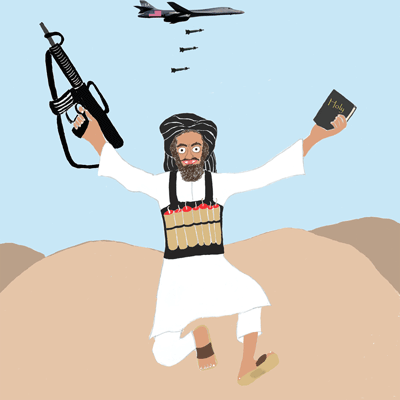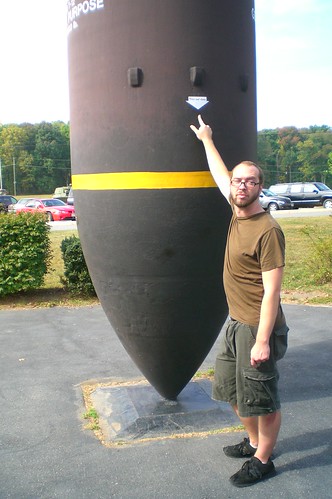 Some are terrifying. Some are silent. But they're all very effective.
Some are terrifying. Some are silent. But they're all very effective.The five deadliest conventional weapons in the world are all part of the U.S. Armed Forces' arsenal, though many are used by other countries as well. Some date back to World War II in concept, but they are still lethal and continue to be used in battle in Iraq and Afghanistan.
The fearsome five:
The AC-130 aerial gunship: This comes in two forms, the AC-130H "Spectre" and the more heavily armed AC-130U "Spooky," both flown by the U.S. Air Force. Versions of the AC-130 were first deployed during the Vietnam War. It's designed to hit targets on the ground or at sea, firing Gatling guns and howitzers fore, aft and to the side. The AC-130's weakness is that it flies "low and slow," making it vulnerable to surface-to-air or air-to-air missiles.
"It can do a lot of damage," explains the Pentagon's Lt. Col. Mark Wright. "It's got a 75-millimeter cannon that can blow through buildings, vehicles. It's designed for taking out protective cover. ... The combination is very lethal -- it's a very feared weapons system."
The 'bunker buster' bomb: The British military first conceived of steel-nosed bombs that dropped heavily and quickly enough to penetrate underground targets.
 During the first Persian Gulf War, the U.S. military quickly rigged together similar weapons to attack Iraqi facilities, and then spent the next decade perfecting the concept.
During the first Persian Gulf War, the U.S. military quickly rigged together similar weapons to attack Iraqi facilities, and then spent the next decade perfecting the concept.Today's bunker busters are usually laser-guided missiles, either rocket powered or artillery fired. "Instead of hitting the top [of the target] and exploding like a regular bomb, it will literally punch a hole through and then explode inside," explains Wright. "It's a very lethal weapon."
Laser-guided bombs: First used in Vietnam, these bombs (and some missiles) home in on a laser-illuminated target marked either by the shooter or a third party on the ground. Unpowered bombs use fins to steer themselves to the target; powered missiles use rocket or jet engines. Laser-guided missiles and bombs were used to great effect during the 2003 invasion of Iraq, offering unparalleled precision at hitting targets; for example, a tank in an alleyway could be destroyed from miles away without hitting the adjacent buildings.
But they do have some drawbacks -- they don't work well, or at all, in heavy dust, fog or smoke. "The biggest advantage is [not hitting] innocent civilians," says Wright. "You don't want collateral damage.
"Let's say the enemy sets up a position right next to a village," he explains. "Instead of having to plaster the area with explosives and inadvertently destroy the village or religious site, you can use this to pinpoint and take it out with surgical precision."
The .50-caliber sniper rifle: Confederate soldiers first mounted scopes on high-powered rifles during the Civil War, but the first specially designed sniper rifles for both police and military use came about in the 1970s. The barrels are precisely machined and specially mounted to minimize recoil.
Many Western sniper rifles use NATO standard 7.62-mm cartridges, but models using massive .50-caliber bullets are so powerful they can take out enemy ordnance by sheer force of impact. One .50-caliber model, the McMillan TAC-50, set the record for longest kill in 2002 when a Canadian corporal shot a Taliban insurgent from a mile and a half away in Afghanistan.
"The advantage is range," says Wright. "You can fire 2,000 meters plus, more than a mile, and hit a target accurately. ... If it hits it's probably going to kill."
Anti-personnel mines: These little hidden bombs cause such havoc in civil wars around the world that they've been banned by most nations. The U.S. still insists on retaining the right to use them, though it doesn't actively deploy them. Best known is the Claymore mine developed by the U.S. in the 1950s and widely copied worldwide, but possibly most notorious is the Soviet "Butterfly" model that during the 1980s killed and maimed Afghan children who thought it was a toy.
"We make extremely rare use of mines anymore," says Wright. "In the old days you had to go clean the mines up ... now you've got to remember to send people to clean that area, [because] civilians or your own troops may run into them."
